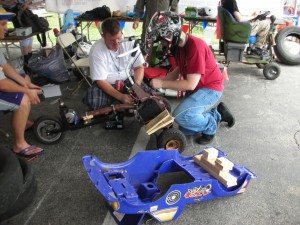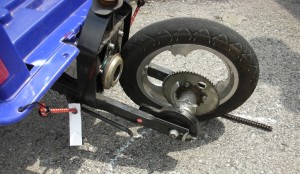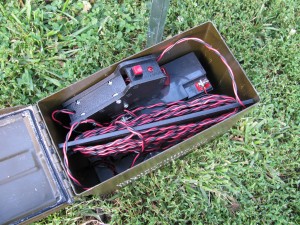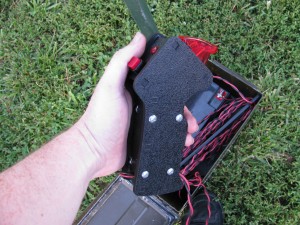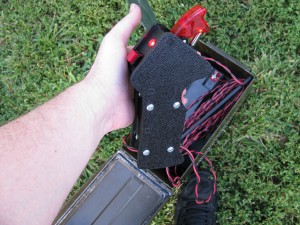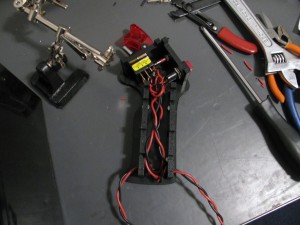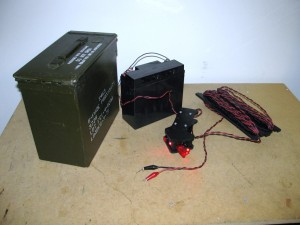I know it's been about a month since the event, but I thought I'd at least mention it a bit here. First off, the 3D printer village went great and attracted the attention of lots of faire goers. The guys were there showing off some of their new kits, we had a lot of Cupcakes, Thing-o-Matics, an , an a few custom RepRaps there. In addition to the 3D printer village, there were a few bots by the robot arena area, and one outside by the Power Wheels track brought by the Hackerspace in St. Louis, .
I got the R3 prototype up and running for the event using a PC power supply and some RepRap V1.2 stepper drivers. All the PCBs I ordered arrived about 2 weeks before the event, and with the exception of putting the parallel port on the opposite side of the break out board that I wanted it placed (it works fine, I just wasn't paying attention to the side it was mounted on when verifying the PCB), all the electronics worked first try. I'll post some more info on this as I work on it and get the whole system running on 24V later on. I've already nabbed the Z-axis off the R3 I demoed for another project, so it's currently non-functional again, but I've got the parts in for the second prototype that I'll be working on soon. Hopefully I'll have more info and a full progress report in a few weeks.
Finally, Power Wheels racing! I helped CCCKC build two cars for the PPPRS that we hosted and got to drive in the race portion. We had one car that was a very stripped down lawn tracker and one that was half snapper riding mower, half electric scooter:
I particularly like the improvised petal, which is constructed from a couple 1"x4" wood blocks, a crude spring, a pair of shutter hinges, and some copper pipe clamps. This one was reasonably fast, but got outclassed by the more experienced teams. It might have done well in the endurance competition, had the rear wheel hub not been completely destroyed during the race while I was driving:
And here's a close up shot of the hub:
Both of our cars were in no shape to race at the end of the event, so I doubt we'll be going to Detroit to finish off the series. Next year I think we'll be a lot better prepared by the time the series starts up again...

